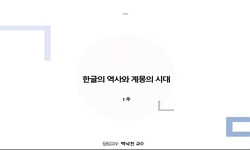국가 간의 교류가 활발히 늘어나면서 각국의 국어에 외래어 사용이 증가하고 있다. 한국과 미얀마 역시 중국어, 영어, 프랑스어 등의 외국어를 들여와서 자국어의 범주로 사용하고 있으며, ...
http://chineseinput.net/에서 pinyin(병음)방식으로 중국어를 변환할 수 있습니다.
변환된 중국어를 복사하여 사용하시면 됩니다.
- 中文 을 입력하시려면 zhongwen을 입력하시고 space를누르시면됩니다.
- 北京 을 입력하시려면 beijing을 입력하시고 space를 누르시면 됩니다.
https://www.riss.kr/link?id=A109194238
- 저자
- 발행기관
- 학술지명
- 권호사항
-
발행연도
2024
-
작성언어
-
-
주제어
한국어 외래어 ; 미얀마어 외래어 ; 차용 방법 ; 대조 ; 의역 ; 음역 ; 혼역 ; Korean loanword ; Burmese loanword ; borrowing method ; paraphrase ; transliteration ; mixed translation
-
KDC
001
-
자료형태
학술저널
-
수록면
107-134(28쪽)
- 제공처
-
0
상세조회 -
0
다운로드
부가정보
국문 초록 (Abstract)
국가 간의 교류가 활발히 늘어나면서 각국의 국어에 외래어 사용이 증가하고 있다. 한국과 미얀마 역시 중국어, 영어, 프랑스어 등의 외국어를 들여와서 자국어의 범주로 사용하고 있으며, 특히 영어 외래어 비중이 크다. 이에 따라 한국어와 미얀마어 외래어에 대한 비교·대조 연구가 이루어지고 있으나 미얀마인 한국어 학습자를 위한 외래어 차용 방식에 관한 대조 연구는 아직 충분하지 않다. 따라서 본 연구는 한국어와 미얀마어에서 흔히 사용되고 있는 영어 외래어 차용 방식을 중심으로 대조 분석하여 한국어 미얀마 학습자의 어휘 학습에 도움을 주는 것을 목적으로 실시되었다.
이 연구를 위해 국어사전, 외국인을 위한 표준 한국어 문법 사전, 미얀마 사전, 논문 등에서 자료를 찾고 일상생활, 잡지, 신문 등에 주로 사용되고 있는 외래어 및 차용 방식을 참고하였다.
본 연구는 문헌 검토를 통하여 한국어와 미얀마어의 외래어 개념 및 차용에 대한 이론적인 설명을 진행하였고, 양국의 외래어 차용 방법을 대조하여 분석하였다. 연구 결과 한국어와 미얀마어 외래어 차용 방법의 공통점과 차이점을 발견할 수 있었다. 공통점은 두 언어 모두 의역, 음역, 혼역으로 외래어를 사용한다는 것이다. 한편 한국어에서는 영어 단어를 그대로 직접 용한 것도 있었으나 직접 차용되지 않고 다른 나라에서 차용된 것을 간접으로 차용되거나 한국어만의 방식으로 의미나 형태를 변형하여 차용하고 있다는 점이 특이했다. 또한 본 연구를 통해 한국어의 외래어 차용 방법 중 음역이 큰 비중을 차지한다는 것을 발견할 수 있었다. 또한 본 연구를 통해 한국어의 외래어 차용 방법 중 음역이 큰 비중을 차지한다는 것을 발견할 수 있었다. 동시에 ‘외래어-하다’ 파생어화 현상이 출현한다는 것도 알 수 있었다. 외래어 차용 방식의 대조 연구를 통해 두 언어 간의 차이점을 발견할 수 있었고, 최종적으로 이러한 차이점이 미얀마인 한국어 학습자가 한국어 외래어를 학습하는 데 어려움을 겪을 수 있다.
다국어 초록 (Multilingual Abstract)
As exchanges between countries have increased, foreign words have become more common in the Korean language.Whether Korean, Myanmar, Chinese, English, or French, the languages of each country have been accepted and used as national languages. Therefor...
As exchanges between countries have increased, foreign words have become more common in the Korean language.Whether Korean, Myanmar, Chinese, English, or French, the languages of each country have been accepted and used as national languages. Therefore, even though research has been conducted to compare and contrast Korean and Burmese loanwords, there is not much research on the borrowing method of loanwords.In this study, we analyzed English loanwords commonly used in Korea and Myanmar, focusing on the method of loanword borrowing by finding materials such as papers, Korean and Myanmar dictionaries, language books, and standard Korean grammar for foreigners.
This study searched for data from Korean dictionaries, standard Korean grammar dictionaries for foreigners, Myanmar dictionaries, and papers and referred to foreign words and borrowing methods mainly used in daily life, magazines, and newspapers.
The purpose of this study isto borrow foreign words through paraphrase, transliteration, and mixed translation. However, if you look closely, you will find that each language has its unique features. The difference from Burmese is that Koreans do not directly borrow certain words from English but indirectly borrow words from other countries.
The purpose of this study was to specify atheoretical explanation of the borrowing methods of Korean and Myanmar loanwords. A comparative study of the borrowing methods of Korean and Myanmar loanwords found that transliteration accounts for a large proportion of the borrowing methods in Korean. At the same time, it was also found that the phenomenon of ‘foreign word-hada’ derivation appears. Through a comparative study of loan word borrowing methods, differences between the two languages were discovered, and ultimately, it was found that these differences cause difficulties for Myanmar Korean learners in learning Korean loan words. Keywords: Korean loanword, Burmese loanword, borrowing method, paraphrase, transliteration, mixed translation.
목차 (Table of Contents)
- 1. 서론
- 2. 한국어와 미얀마어 외래어의 개념 및 차용법
- 3. 한국어와 미얀마어 외래어의 차용법 대조
- 4. 결론
- 참고문헌
- 1. 서론
- 2. 한국어와 미얀마어 외래어의 개념 및 차용법
- 3. 한국어와 미얀마어 외래어의 차용법 대조
- 4. 결론
- 참고문헌
동일학술지(권/호) 다른 논문
-
- 경희대학교 학술단체협의회
- 김동민(DongMin Kim)
- 2024
-
- 경희대학교 학술단체협의회
- 박솔해(Solhae Park)
- 2024
-
- 경희대학교 학술단체협의회
- 편집부
- 2024
-
- 경희대학교 학술단체협의회
- 장민주(MIN JU JANG)
- 2024




 스콜라
스콜라






